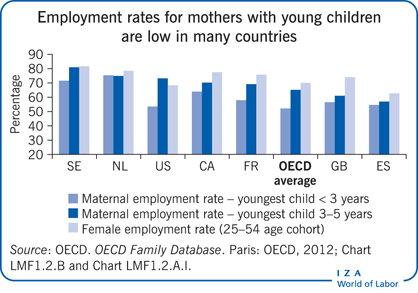Elevator pitch
Women’s labor force participation has rapidly increased in most countries, but mothers still struggle to achieve a satisfactory work−life balance. Childcare allows the primary caregiver, usually the mother, to take time away from childrearing for employment. Family policies that subsidize childcare and increase its availability have different effects on female labor supply across countries. For policymakers to determine how well these policies work, they should consider that policy effectiveness may depend on country-specific pre-reform female employment and earnings, and childcare availability, costs, and quality.

Key findings
Pros
Countries with a higher availability of affordable childcare exhibit high maternal labor force participation rates.
The provision of childcare, especially for pre-school-aged children, helps mothers achieve a satisfactory work−life balance.
Higher childcare subsidies result in a substantial increase in childcare utilization.
Larger labor supply effects occur in countries where employed single parents or two-earner couples are eligible for the subsidies.
Cons
The scope for policy to increase labor supply is limited in countries with very high female labor force participation and/or highly subsidized childcare systems.
Good access to affordable care might result in little or no increase in maternal labor supply if it only crowds out other forms of non-parental care.
Difficulties in measuring the lack of qualified people working in childcare and the quality of care may prevent families from using this service.
Preferences and social norms may drive childcare choices, and not only costs and availability.